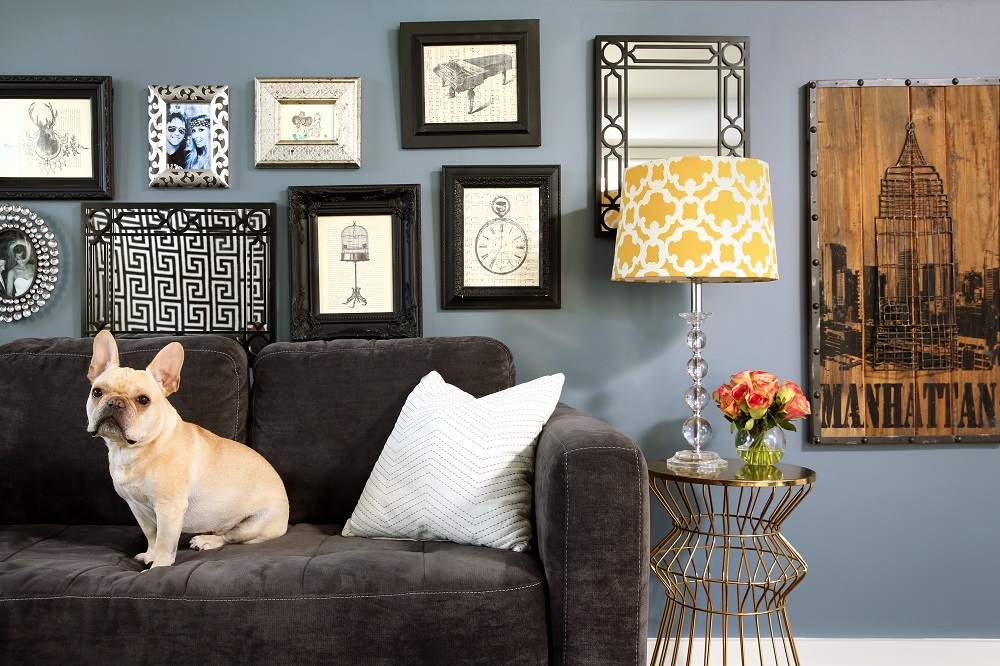How to Have a Vegan and Cruelty-Free Home


Switching to a vegan and cruelty-free lifestyle is a tough task, but it doesn’t have to be overwhelming. In fact, it can be a really simple process – you just have to know what to eliminate from your home and what to replace it with. This guide will help walk you through that process.
You might hear vegan and cruelty-free used interchangeably, but they’re actually very different. Sometimes, vegan products aren’t cruelty-free, and cruelty-free products aren’t vegan.
When you see a vegan product labeled as “vegan,” that only means it doesn’t include animal ingredients. It doesn’t mean the product wasn’t tested on animals. When you see a product labeled as “cruelty-free,” that only means that the ingredients or finished product wasn’t tested on animals.
If you’d like to make the switch, the first step is to figure out which products can stay in your home and which you will need toss.
How to Prepare to Go Vegan and Cruelty-Free at Home
Some products are obviously not free of animal-products or eco-friendly. Other items include animal products and byproducts that you wouldn’t even notice if you were looking for them.
These include:
- Beeswax
- Cleaning products, like bleach and others
- Cowhide
- Down
- Fabric softener and some soaps
- Fur
- Glues used in woodwork and musical instruments
- Glycerin
- Keratin
- Lanolin
- Latex
- Leather
- Plastic bags
- Products with red dye derived from carmine (crushed bugs)
- Sheepskin
- Silk
- Some paints
- Suede
- Tallow
- Tires for cars and bikes
- Wool
If you’re considering such a big change for your household, you probably already know why these products are cruel. Even plant-based products like carnauba wax and palm oil, are significant contributors to animal cruelty across the globe.
How to Get Rid of Products You Can’t Keep in Your Vegan, Cruelty-Free Home
You have a few options here, depending on your school of thought. However you decide to dispose of your unwanted products, just remember: whatever you decide is your business and nobody else’s.
Use the product until you can’t anymore. You might choose to continue using the items until they’re worn out. Once they are no longer useable, replace them with new cruelty-free products.
Donate or sell your item. Alternatively, you may decide to donate or sell your items. It might seem like a small thing, but by doing this, you’re preventing another person from making a new purchase that directly impacts animals and their welfare.
Dispose of the item responsibly. If you choose to get rid of your items without passing them on to someone else, make sure to look for the most sustainable and safe disposal method.
Alternatives to Animal Products and Products Testes on Animals
You can use your influence as a consumer to make a difference. Many vegan and cruelty-free products are actually better than their animal-based counterparts. Many are plant-based and others are synthetic.
Cleaning Products
There are a lot of alternative cleaning products out there. When you’re shopping, keep an eye out for products that feature a cruelty-free logo. Some animal and cruelty-free products (as of this writing) include:
- Bar Keepers Friend Powdered Household Cleaner
- Biokleen Carpet and Rug Shampoo
- Biokleen Oxygen Bleach Plus
- Citra Solv Air Scense
- Citra Solv Natural Cleaner & Degreaser
- ECOS Furniture Polish + Cleaner
- ECOS Liquid Laundry Detergent
- Ecover Dishwasher Tablets
- Method Dish Soap
- Method Squirt + Mop Hard Floor Cleaner
- Meyer’s Clean Day Fabric Softener
- Meyer’s Clean Day Lavender Glass Cleaner
- Seventh Generation All-Purpose Natural Cleaner
- Seventh Generation Toilet Bowl Cleaner
Household Furniture and Bedding
Cruelty-free and vegan furniture doesn’t include animal products like leather or down and is made without harming or displacing animals. Many furniture companies have strong cruelty-free policies, including:
- Bambeco
- GreenCulture Furniture
- IKEA
- Terra Furnishings
- West Elm
- Synthetic leathers feel just like the real deal, and you can opt for faux fur and down alternatives made from plant-based and synthetic materials.
If you’re shopping for a vegan mattress, be careful – sometimes, they’re made with latex, which contains casein, a protein found in mammal milk. Anti-cruelty bedding companies include:
- Bambi
- Bamboo Village
- Downessa
- Herington
- Microcloud
- Primaloft
- Tontine
Remember that you best bet when shopping for cruelty-free and vegan products is to find a company with a logo from Choose Cruelty Free or Leaping Bunny. These companies vet and accredit businesses. Don’t fall prey to other cruelty-free logos that some businesses put on their products; more often than not, they’re misleading or completely false.
Tips for Buying Animal-Friendly Products
Now that you know better, you can do better! Here are a few pointers to keep in mind when you’re buying cruelty-free, vegan furniture or other household items:
- The only way to be completely positive that a company is cruelty-free is to check its certification with Leaping Bunny or Choose Cruelty-Free. Sometimes a label that says “cruelty-free or “not tested on animals” only refers to a finished product, not its ingredients.
- Animal testing is never required for household products or cosmetics. Neither the U.S. Food Administration nor the U.S. Consumer Product Safety Commission requires this. In reality, most chemicals and products have been tested on animals in the past, so it’s unnecessary to do so now.
- Investigate! Read through the fine print on ingredient lists or call companies when you’re not sure about something.
Where to Find Cruelty-Free Products and Brands
Check out Leaping Bunny, Cruelty-Free Kitty and Logical Harmony to find cruelty-free brands and products. There’s even a cruelty-free app by Leaping Bunny. It’s available for Android and iPhone devices.
Original article from Redfin
